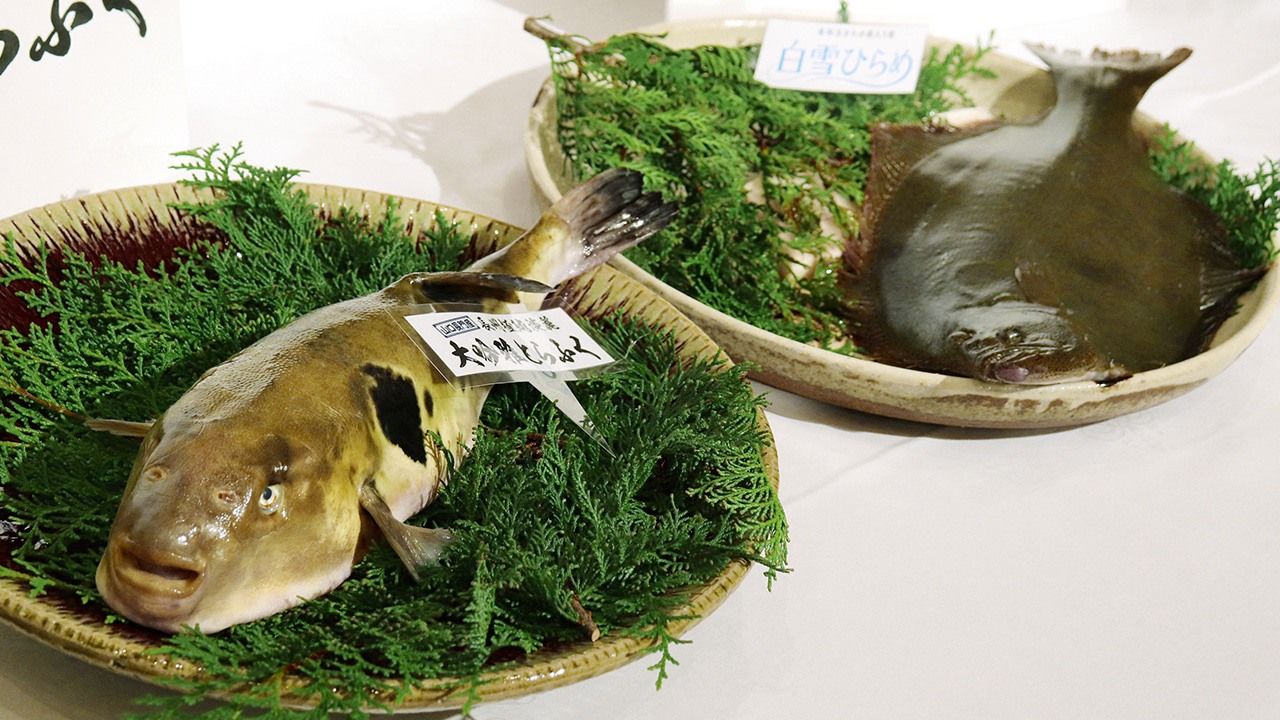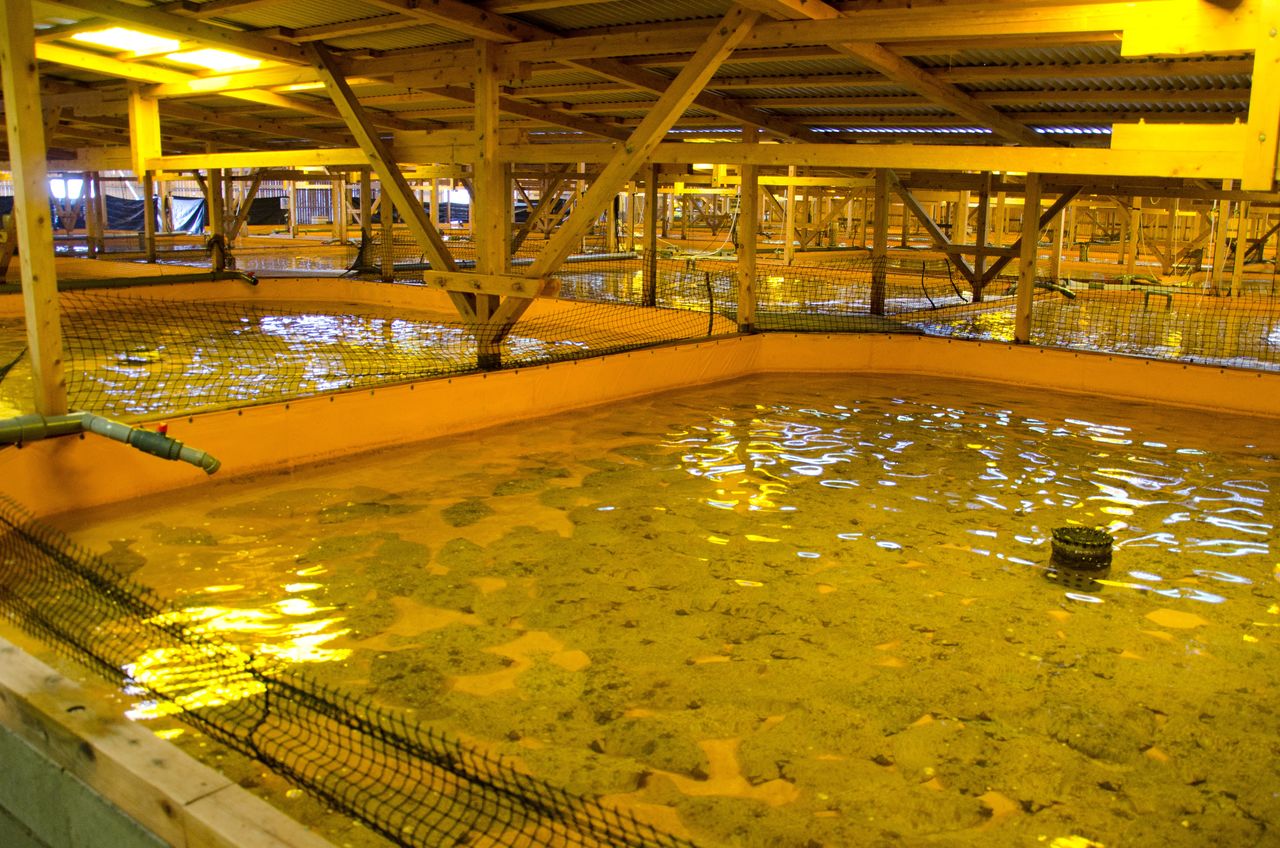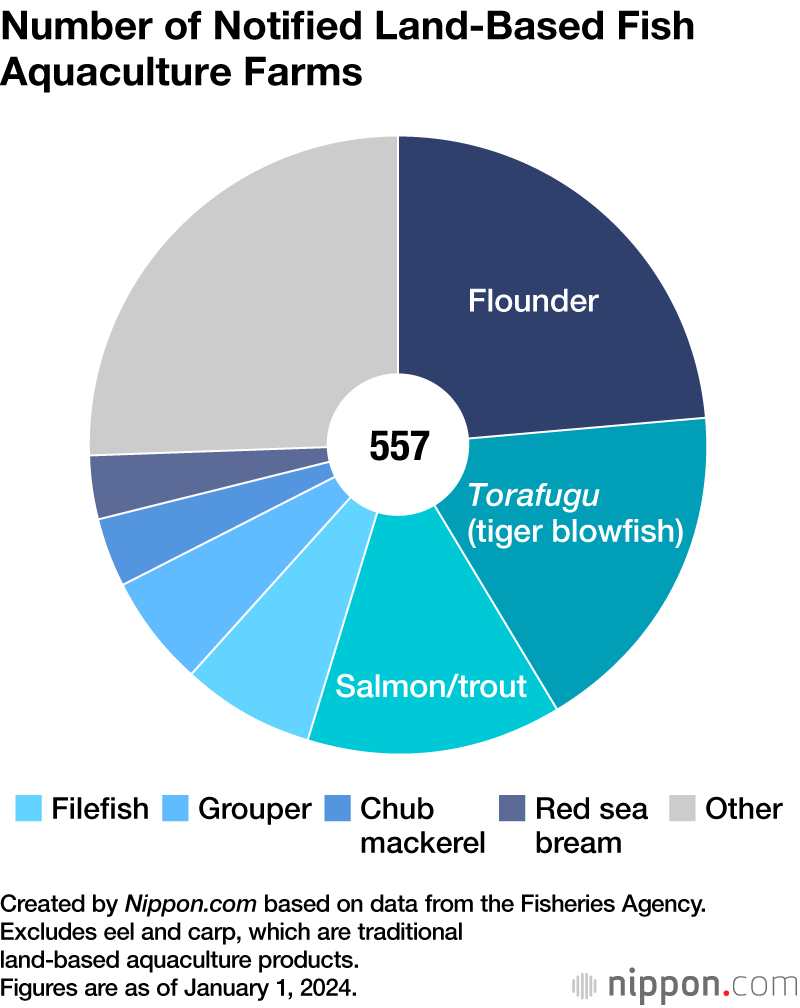
Sushi Toppings Caught Onshore? Land-Based Aquaculture Expanding in Japan
Economy- English
- 日本語
- 简体字
- 繁體字
- Français
- Español
- العربية
- Русский
Easy Entry
It is easy for companies to enter the land-based aquaculture market as the necessary water tanks and other facilities can be installed on land lying idle and no fishing rights are needed. The two main methods of farming are the flow-through system, making use of natural water, and the recirculating system, where water is filtered as it is used. In 2020, the government developed a comprehensive strategy to make aquaculture a growth industry, with one of the initiatives being the promotion of land-based aquaculture.
Fuji Keizai Group, a private research company, estimated that 2,250 tons of marine products from land-based aquaculture were produced in 2023, or nearly twice as much as in 2019. It predicts that in 2030 the total will rise to almost 30 times the 2019 level. The proportion of land-farmed fish out of all farmed fish was 0.2% in 2023, but this is expected to increase to 3.6% by 2030. Meanwhile, the size of the market for system equipment and related items was ¥13.5 billion in 2023, 11.4 times greater than for 2019.
JR West has been engaged in the land-based aquaculture of mackerel and other fish since 2017, with the aim of creating a brand. In the landlocked prefecture of Saitama, mackerel and sea urchins are being cultivated and in Hokkaidō, known for its abundant seafood, salmon is being raised inland as a response to a drop in fish catches. Maruha Nichiro and Mitsubishi Corporation are jointly building a plant, intending to begin raising land-based Atlantic salmon in Toyama Prefecture from fiscal 2025.
Reducing Risks
An increased focus on health and a growing population mean that global demand for marine products is on the rise. On the other hand, climate change and overfishing have led to declining catches and changes in fish species around Japan, making it more difficult for Japanese people to obtain marine products. Seawater aquaculture faces challenges to expansion including the difficulty in finding new coastal areas to establish facilities and the issues of water temperature changes, red tides, and marine pollution from uneaten feed and fecal material.
With land-based aquaculture, the effects of changes in water temperatures and red tides can be lessened by adjusting the environment where the fish are raised, such as through moderating temperature, feeding, and oxygen content. The impact on wastewater can also be managed. While there are risks like power outages and infectious diseases spreading in the tanks, advances in battery technology and hygiene management mean that production can be expected to expand.

Land-based aquaculture of flounder in Saiki, Ōita Prefecture. (Courtesy JF Ōita; © Jiji)
In April 2023, the Fisheries Agency introduced a notification system to keep track of and promote the rapidly increasing number of land-based aquaculture farms. The results showed that, as of January this year, there were 662 farms operating across Japan. By prefecture, Okinawa had the most with 168 farms, followed by 55 in Ōita, and 35 in Kagoshima.
Growing Markets
According to the Fisheries Agency and other sources, the land-based aquaculture of sea grapes, flounder, and torafugu (tiger blowfish) has been established for some time. However, more recently, cultivation of salmon, a popular topping for sushi, has also been increasing. Fuji Keizai Group stated that the amount of cultivated salmon and trout had more than doubled between 2019 and 2023. There is also growing interest in whiteleg shrimp, which has a short rearing period. Stock that has established rearing methods and has greater added value in the market ranks higher when it comes to farming.
Despite the ease of entry, there are substantial initial investments involved for land-based aquaculture, including construction of the facilities, and electricity and other running costs. For businesses to thrive, they have to create high added value through branding.
(Translated from Japanese. Banner photo: Torafugu [tiger blowfish][left] and flounder, raised at a land-based JR West aquaculture farm. © Jiji.)

